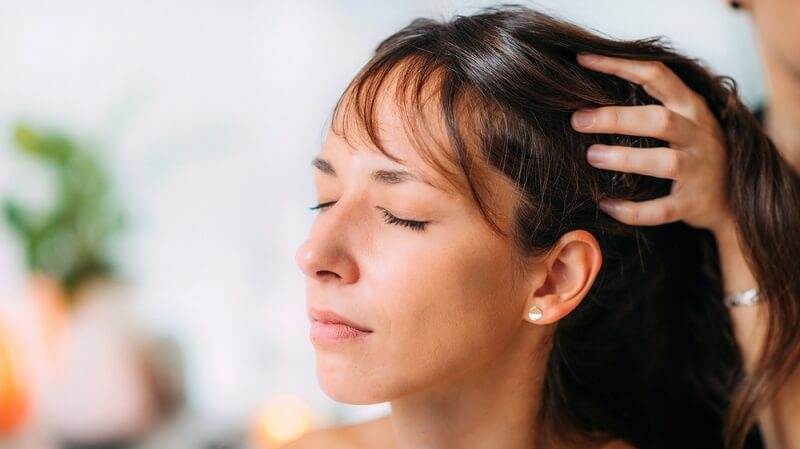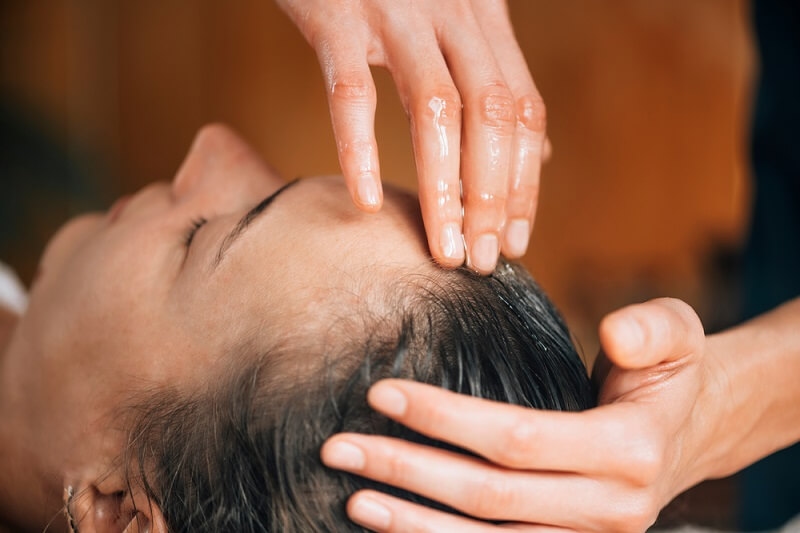
When it comes to maintaining beautiful, healthy hair with shine, few rituals can rival the ancient tradition of hair oiling, its advantages, and practices. For centuries, hair care has been passed down through generations as the purest way to nourish the scalp, strengthen hair strands, and restore lost luster. In the current fast-paced life, with chemical hair products and heated styling instruments, it is a welcome turn for your hair to return to the traditional technique of oiling.
Before further discussion, it’s important to note that understanding hair oiling benefits and techniques — combined with a regular scalp oiling routine or even a hot oil treatment — can dramatically improve your hair’s texture, reduce breakage, and promote growth whether you want to reverse damage or simply maintain soft, frizz-free, healthy locks, the secret lies in the right oil and the proper technique.
Before jumping into a hair care ritual of your own, let’s talk about why hair oiling benefits and techniques are so practical. The act of applying oil to your hair and scalp is more than a beauty tradition; it’s a science-backed practice for strengthening the hair cuticle, moisturizing the scalp, and enhancing blood circulation.
This is why having a consistent scalp oiling routine is crucial for those who want truly healthy hair. It's not just putting the oil on—it's doing it correctly.
Having a scalp oiling routine is the basis for effective hair care. Like skin, your scalp needs to be nourished, kept hydrated, and maintained in balance. Over time, stress, pollution, and even certain chemical shampoos can strip your scalp of its natural oils, leading to dryness and hair loss.
By massaging oil into your scalp, you stimulate the natural secretion of oil and fortify your roots. The heat from your fingers enhances blood circulation, causing nutrients to seep deeper into the follicles. The outcome? Thicker, stronger, and shinier hair from roots to ends.
Pro Tip: Apply your favorite oil at least twice weekly as part of your scalp oiling routine. Warm the oil gently before application for better penetration.
The effectiveness of your hair oiling benefits and methods depends heavily on selecting the best oil. There are many different kinds of oils. Here's a breakdown to help you choose which for your hair:
Coconut oil is suitable for all hair types. It penetrates the hair shaft, decreasing protein loss and increasing strength. It can be used as a pre-shampoo and everyday moisturizer.
Argan oil contains antioxidants and Vitamin E. It's ideal for those with dry or frizzy hair who want instant shine without greasiness.
Stimulating hair growth, castor oil is rich and heavy. It's usually combined with lighter oils to make it more manageable to apply.
Because it replicates the natural sebum of the scalp, jojoba oil promotes balanced oil production, making it suitable for both dry and oily scalps.
These Ayurvedic products have been used for centuries in traditional hair treatments to delay graying and provide deep moisturization.

Once you've selected your oil, learning to apply the correct hair oil technique guarantees maximum benefit from your effort. Here's what to do:
Heat your favorite oil slightly. The heat opens the hair cuticles, allowing for deeper penetration into the scalp.
Section your hair into small pieces for improved distribution.
Focus on the scalp first. With your fingers, let your hair fall to the palms of your hands, the rest of your hair hanging over your shoulder in front of you. In circular motions, gently massage the oil into the scalp. Not only will this stimulate blood circulation, but it will also help the oil saturate evenly over your scalp.
Once the scalp has been treated, apply oil with palms rammed against the length, covering the mid-split and concentrating on the ends.
Once you have completed the previous two steps, let the oil penetrate to establish a pre-poo treatment. Leave this oil in your hair for at least 1-2 hours. You can allow it to soak for a more extended period, up to overnight, to facilitate further absorption.
You will gently shampoo the oil out. Be sure not to use hot water, as it can strip natural moisture from your hair.
These simple methods for oiling your hair will provide your hair with the best absorption and shine that lasts.
If your hair is especially dry or damaged, a hot oil treatment will be a miracle. This method applies warm oils to open the hair cuticles, allowing deeper moisturizing to penetrate.
Hot oil treatment can repair moisture balance, smooth out frizz, and impart visible shine.
Doing this every week can have a lasting impact on your hair.
The pre-shampoo treatment represents one of the most overlooked elements of a time-honored hair care routine. Applying oil before royal helps prevent hair shaft damage from abrasive detergents, and it helps avoid over-dryness of the hair.
Applying oil before washing provides a barrier that helps preserve moisture while allowing the hair to be cleaned.
This routine will leave you with conditioned hair that is smooth, moisturized, and frizz-free after washing.
While the benefits of hair oiling are generally applicable, its frequency will depend on your hair type.
Ideally, oil your hair in the evening and leave it overnight for deep conditioning. Make sure to protect your pillowcase from stains.
Even with the best intentions, some mistakes can prevent hair growth. Here is what you should not do:
Avoiding these errors will maximize the benefits of your scalp oiling process and ensure a healthy scalp environment.
Ingredients are a significant factor in determining the effectiveness of your oiling session. Most contemporary products combine several oils and herbal extracts to address a particular issue.
By infusing these helpful oils, you will contribute to the functional use of oils in your hair oil creations, as these oils will strengthen the hair from the inside.
Strong hair grows better than weak and damaged hair!
One of the primary benefits of and reasons to promote hair oiling is the health of the scalp and the impact on hair growth. The act of massaging stimulates circulation, bringing nourishment and oxygen directly to the follicles.
Oiling each day can also help reduce inflammation, balance sebum production, and strengthen the roots.
For individuals experiencing hair loss or baldness, this is an easy, chemical-free method to promote hair regrowth.
The use of oil in hair care is a common theme in all cultures. Ayurvedic rituals in India often use oil, whereas in Morocco, argan oil is commonly used. Every culture has found its way of adopting the self-care ritual of oiling.
In India, pre-shampoo massages are often applied using warm coconut or sesame oil. Moroccan women apply argan oil after shampooing to seal in moisture. These age-old techniques emphasize regularity and commitment while caring for beautiful hair.
By adding these age-old practices to your modern regimen, you become part of a global and integrated approach to beauty and well-being.
Now that you have removed the oil from your hair, you will want to follow up with some aftercare to prolong the benefits.
Any combination of these simple steps can help to extend your hot oil or pre-shampoo treatment and enhance softness, manageability, and vibrance.
Healthier hair always starts with natural and traditional maintenance.
When you engage with the benefits and methodologies of hair oiling, you allow your hair to receive the necessary care it deserves. Whether it is daily scalp oiling, a calming hot oil treatment, or a protective pre-shampoo treatment, each modality leads to a healthier scalp and more resilient hair.
In our current hair care culture, there is a great emphasis on products and tools, but sometimes, the best treatments are some of the simplest - passed down through the years. Regular oiling is one of these.
So ease into the bliss of treating yourself a few minutes a week. Allow your hair to reap the benefits, and you'll notice the difference in no time: a smoother texture, increased growth, and the beautiful sheen that we all crave.
This content was created by AI